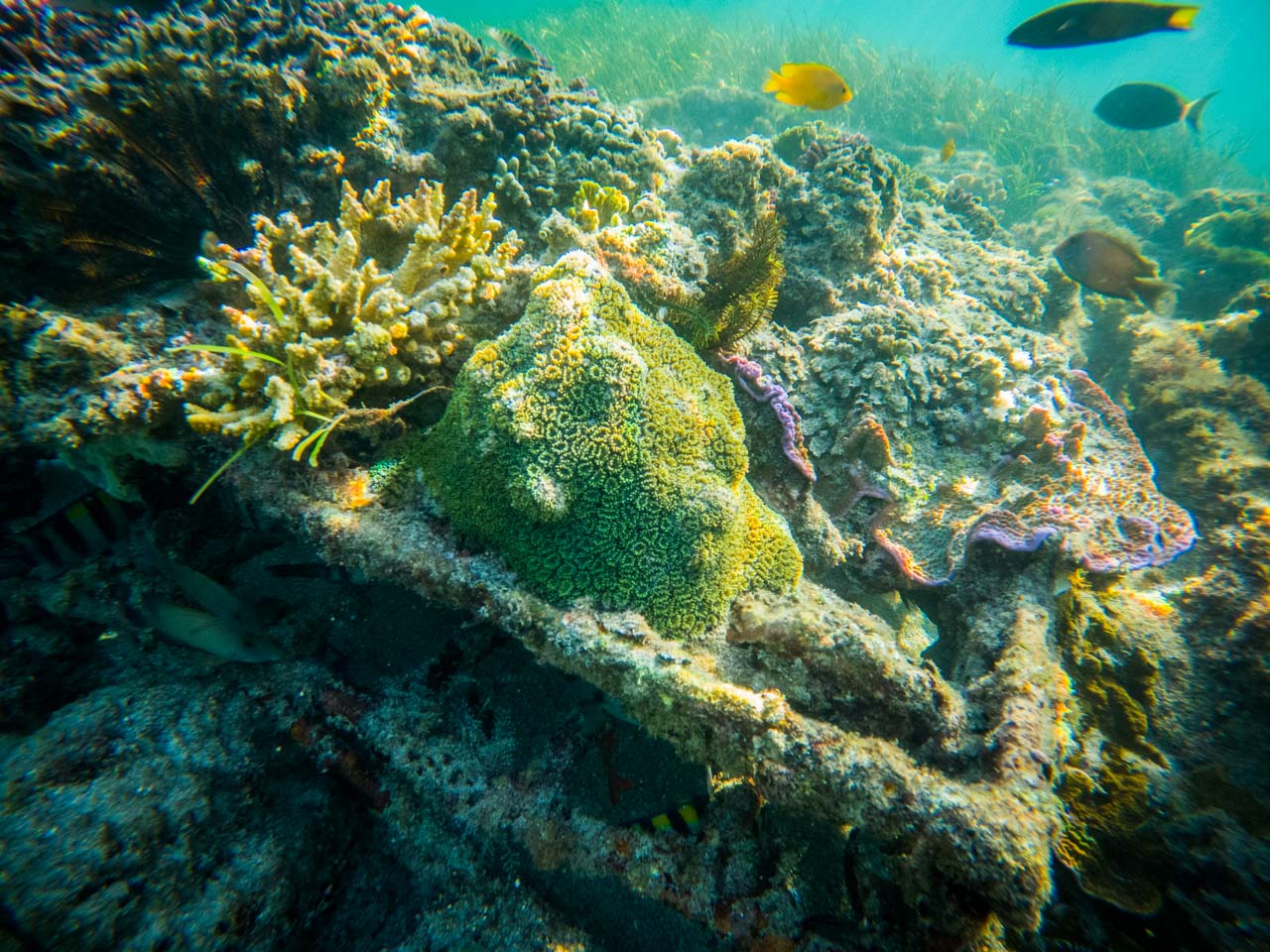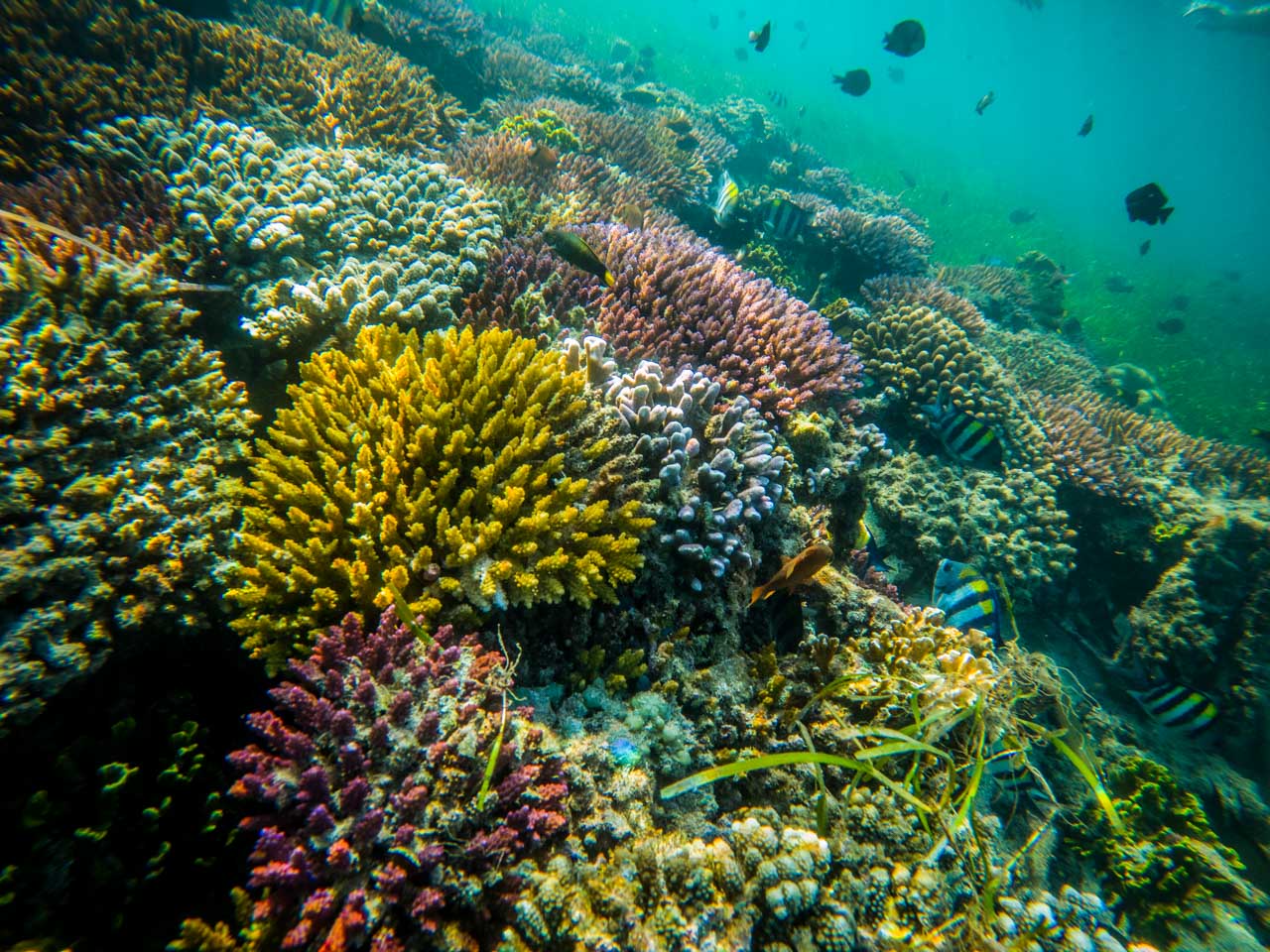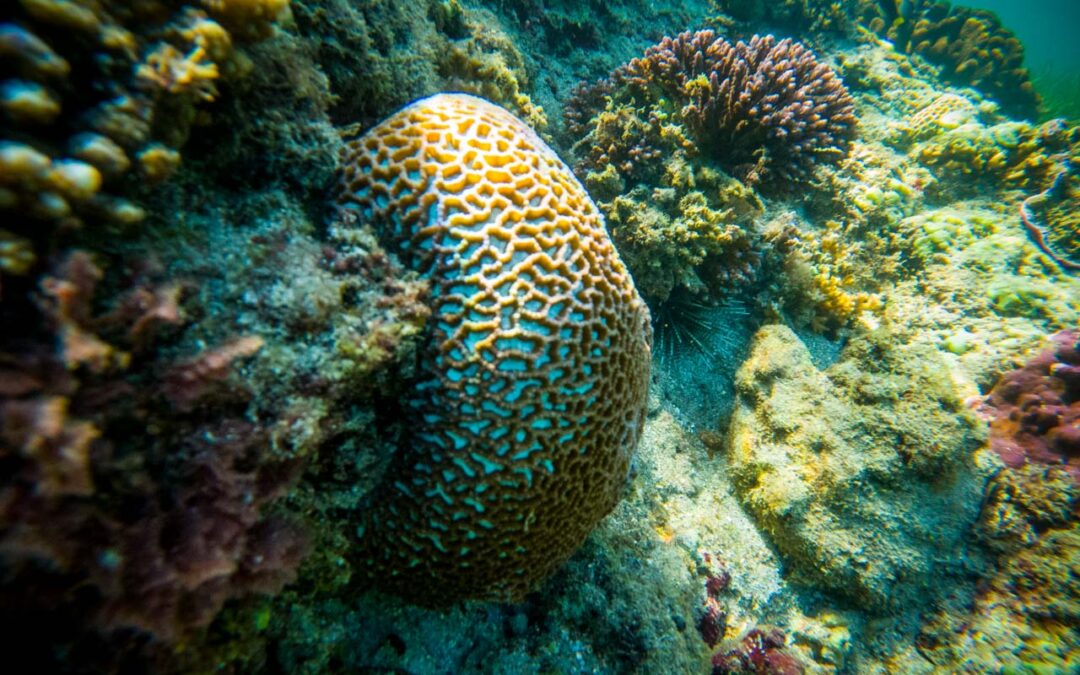Throughout the recent sessions, the R.O.L.E. Foundation undertook coral reef restoration maintenance and measurement at Nusa Dua beach, collaborating with our partners and instructors from Bali Blue Harmony (BBH), an NGO dedicated to marine ecology through coral reef restoration. This collaboration included the planting of ten reef stars earlier this year using the MARRS method, strategically positioned near Mengiat beach alongside hundreds of other reef stars installed by Bali Blue Harmony.
What is a reef star?
These structures are crafted from welded metal, coated with rust converter, resin, and sand. Each holds 15 coral fragments attached with cable ties and is installed underwater using stakes and interlocking. Routine bi-weekly maintenance involves scrubbing and re-tying.
What kind of maintenance do we perform?

Nusa Dua beach, bustling with resorts and tourists, witnesses the flow of substances like shampoos, garden fertilizer, sunscreen, contributing to high concentrations of phosphorus and nitrogen. These nutrients spur algae growth, overtaking the coral reef stars. Bi-weekly scrubbing is crucial to remove algae, allowing corals access to sunlight, oxygen, and fish. After 8-12 months, bi-weekly scrubbing can be reduced to monthly maintenance.
Retying corals becomes necessary if cable ties are loose or broken. In a perfect scenario, tight securing during installation should suffice, but errors and strong sea currents can lead to loosening. Corals can be easily repositioned and re-tied underwater.
Recent Maintenance

In the latest sessions, we undertook scrubbing, re-tying, and measuring of corals on our reef stars twice. Rapid algae buildup necessitates frequent scrubbing, aiding corals in maintaining access to sunlight and oxygen. Measurements of twenty coral colonies revealed growth between 2-6 millimeters over two weeks. Though modest, this progress is exciting. Fish species around the reef stars include teira batfish, butterfly fish, pufferfish, Moorish Idol, damselfish, starfish, among others. We eagerly anticipate measuring and reporting the positive impacts of this coral reef cluster on nearby ecology. Our heartfelt thanks to Bali Blue Harmony for their unwavering support and guidance, enriching our marine conservation experience.
Author: Vincent Marcucci


Recent Comments